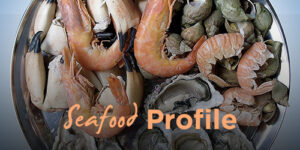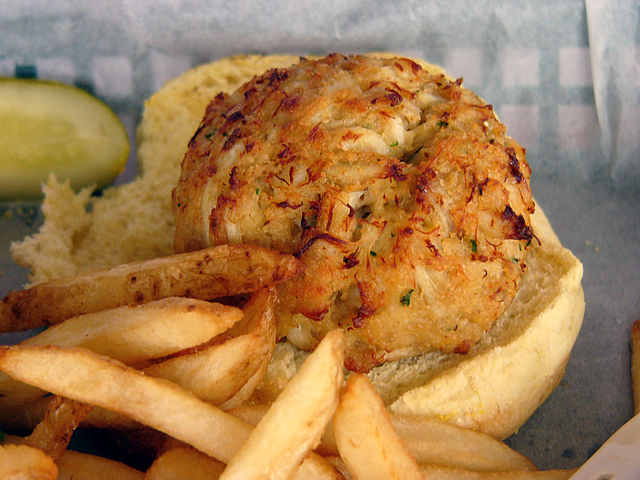
Crab cakes are among my favorite seafood dishes and they’re popular here in the US of A. Think of them as the hamburgers of the sea. Yes, I know about salmon burgers but honestly, is anything that healthy for you truly a burger? Yeah, I didn’t think so.
Basically what you’re looking at here is a fishcake made of crabmeat, bread crumbs, mayo, mustard, eggs, and seasoning. The cakes are typically deep fried, sauteed, baked, grilled, or broiled. Tradition associates crab cakes with the Chesapeake Bay area, namely Maryland or Virginia. But I’ve had terrific crab cakes at The Kettle in LA’s Manhattan Beach, too.
It’s no great spoiler that crab cakes enjoy the most popularity along coastal areas with thriving crabbing industries. In particular, the mid- and South Atlantic states but New England, the Pacific Northwest, and Northern California as well. The earliest use of the term “Crab cake” dates to Crosby Gaige’s New York World’s Fair Cook Book in which they are described as “Baltimore crab cakes”.
Blue crab is the traditional victim meat-of-choice because it’s native to Chesapeake Bay but really, any species of crab may find itself cooked into a crab cake. West Coast crab cakes typically use Dungeness Crab for the job, for example. And while lots of eateries dub their cakes as Maryland or Maryland-style crab cakes, many of those places use Blue Swimmer Crab imported from Asia. Regardless of source, the cakes are usually prepped sans filler, with backfin (all-lump) crab meat comprising the yumminess inside the cake. They’re served either as an entree or in sandwich form, even as an eggs Benedict. Sides are usually something on the comfort food side like fries or potato salad but cole slaw and macaroni salad are also popular choices. The cakes themselves vary in size from a little cookie up to a large burger-esque entree.
Photo Credit: By Kathleen Conklin – Flickr: A Delicious Crabcake at the Middleton Tavern, CC BY 2.0, https://commons.wikimedia.org/w/index.php?curid=15956916







